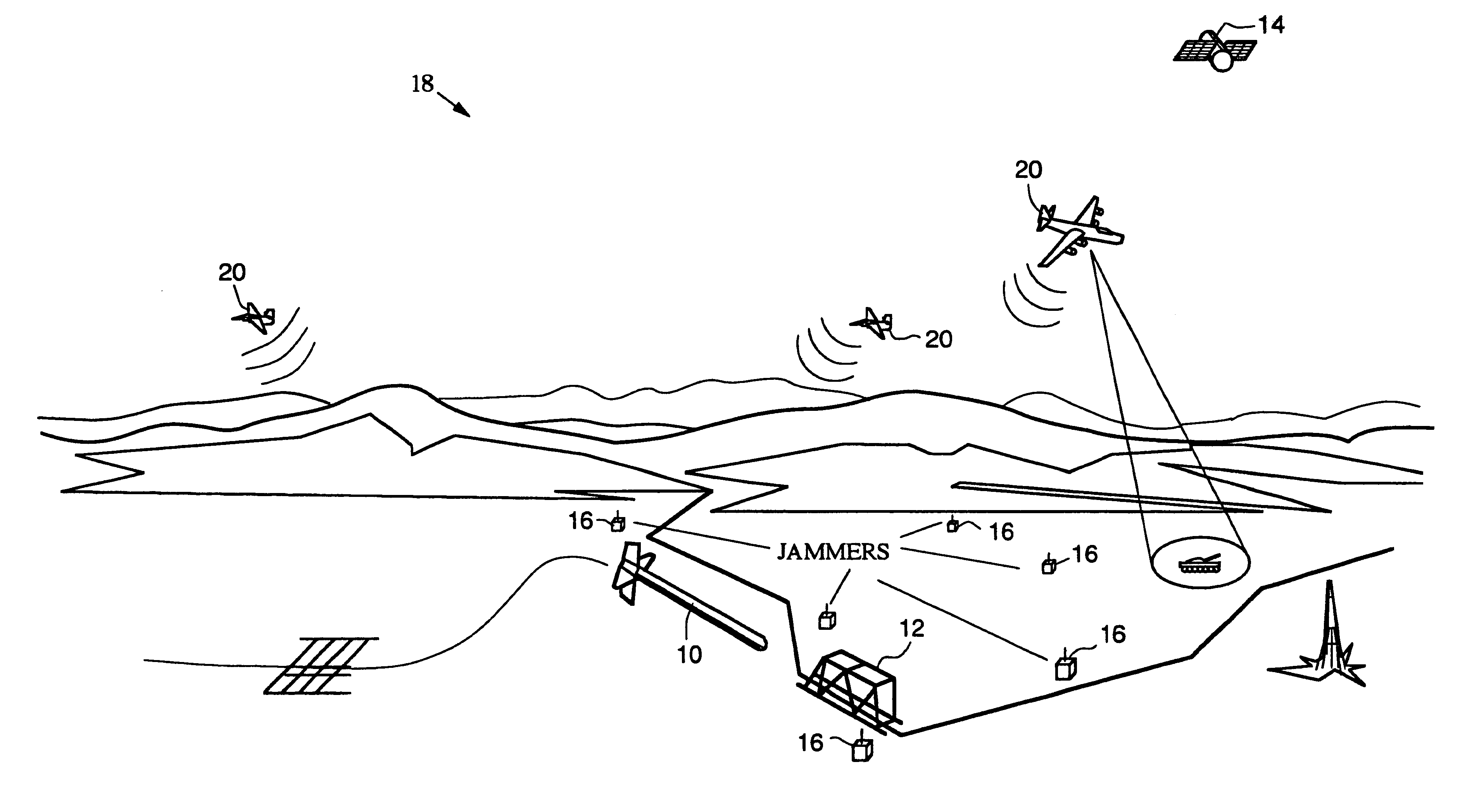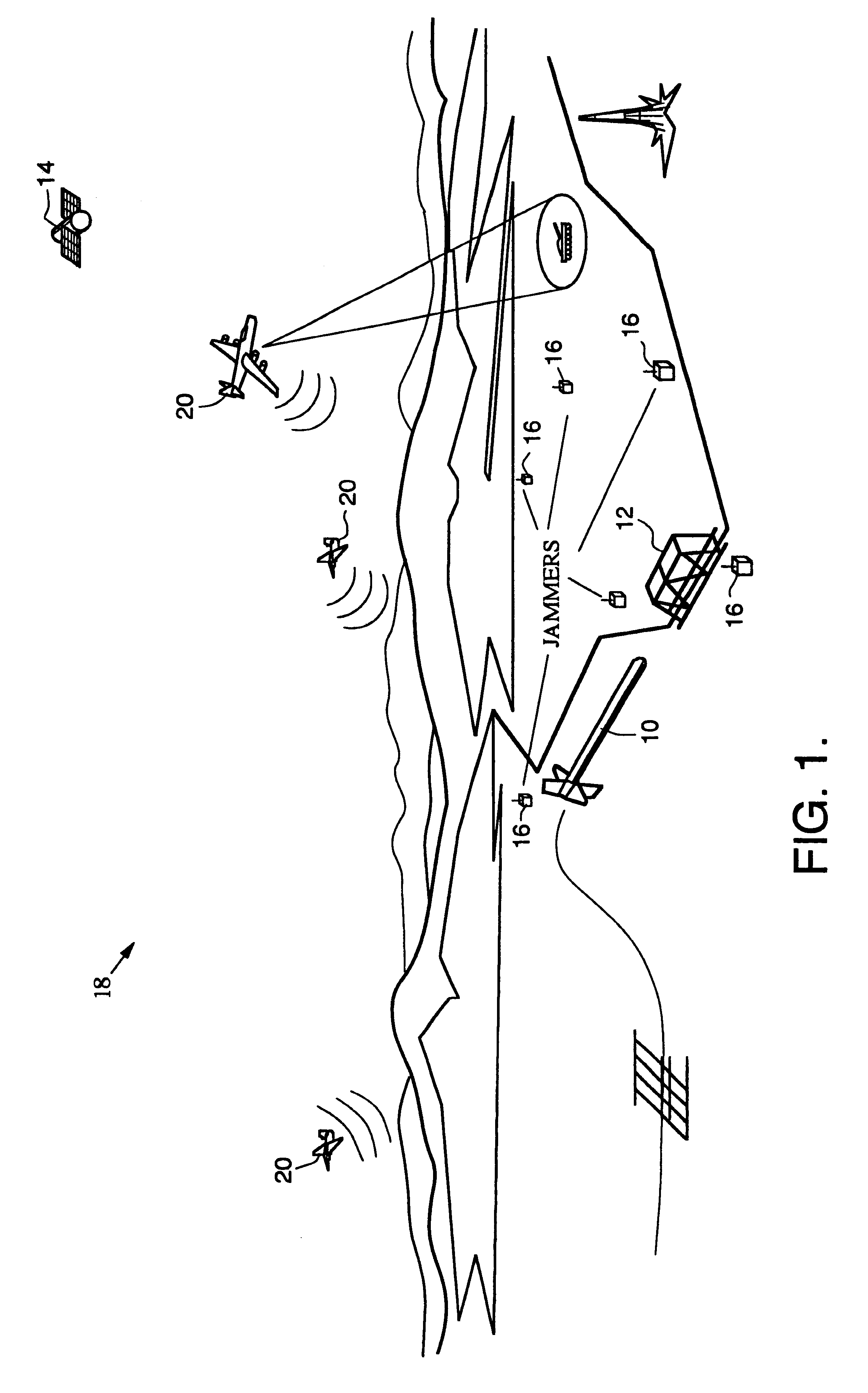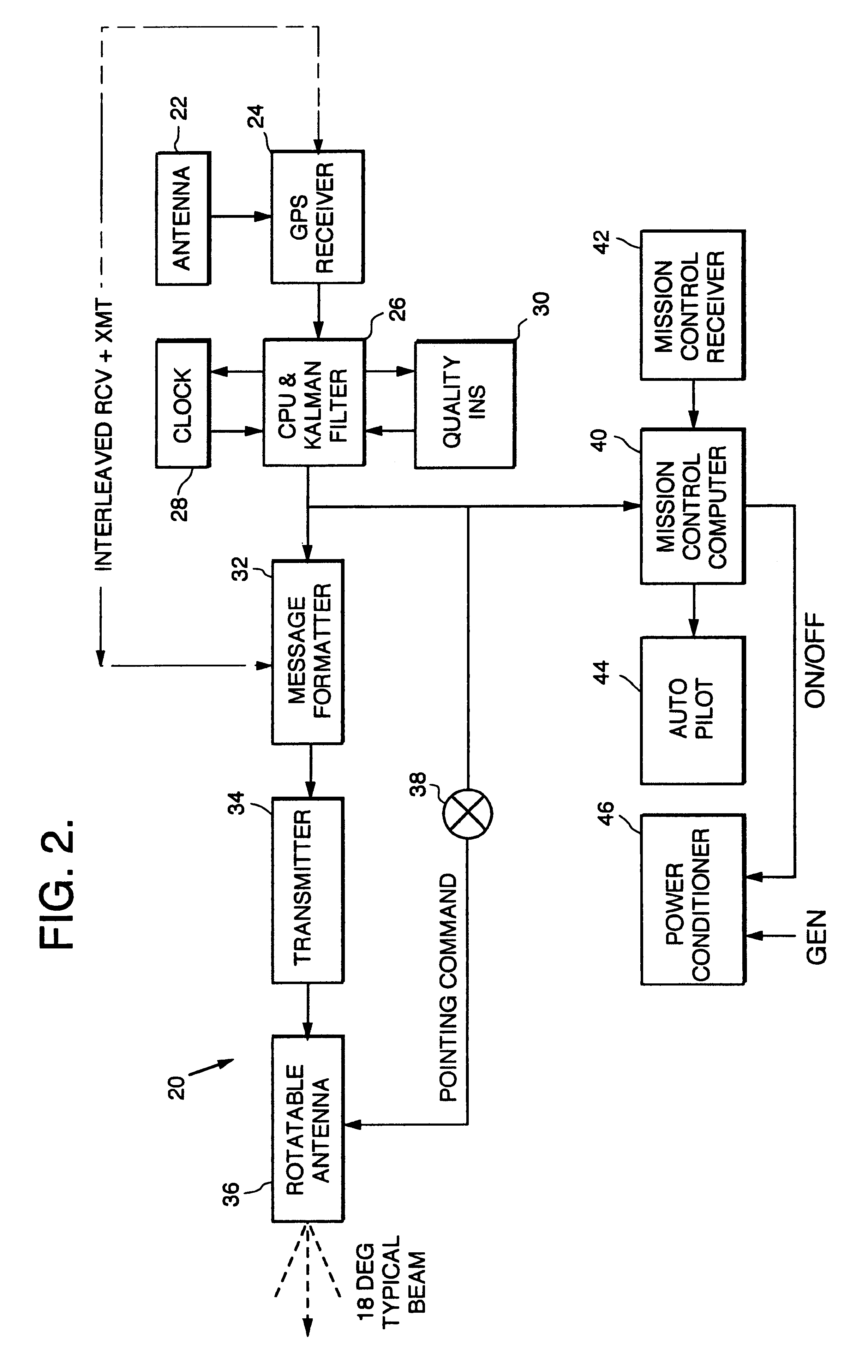Airborne GPS guidance system for defeating multiple jammers
a gps guidance and multiple jammer technology, applied in direction controllers, instruments, using reradiation, etc., can solve the problems of low power jammer, low cost jammer scattered around target area, and inability to achieve low-power jammer,
- Summary
- Abstract
- Description
- Claims
- Application Information
AI Technical Summary
Benefits of technology
Problems solved by technology
Method used
Image
Examples
Embodiment Construction
Illustrative embodiments and exemplary applications will now be described with reference to the accompanying drawings to disclose the advantageous teachings of the present invention.
While the present invention is described herein with reference to illustrative embodiments for particular applications, it should be understood that the invention is not limited thereto. Those having ordinary skill in the art and access to the teachings provided herein will recognize additional modifications, applications, and embodiments within the scope thereof and additional fields in which the present invention would be of significant utility.
FIG. 1 is a diagram depicting the airborne GPS guidance system of the present invention in an operational environment. Conventionally, a missile 10 is guided to a target 12 using GPS signals from a satellite 14. Unfortunately, as mentioned above, a small number of low power (e.g. 1 watt), low cost jammers 16 may effectively defeat the system. When the GPS link i...
PUM
 Login to View More
Login to View More Abstract
Description
Claims
Application Information
 Login to View More
Login to View More - R&D
- Intellectual Property
- Life Sciences
- Materials
- Tech Scout
- Unparalleled Data Quality
- Higher Quality Content
- 60% Fewer Hallucinations
Browse by: Latest US Patents, China's latest patents, Technical Efficacy Thesaurus, Application Domain, Technology Topic, Popular Technical Reports.
© 2025 PatSnap. All rights reserved.Legal|Privacy policy|Modern Slavery Act Transparency Statement|Sitemap|About US| Contact US: help@patsnap.com



